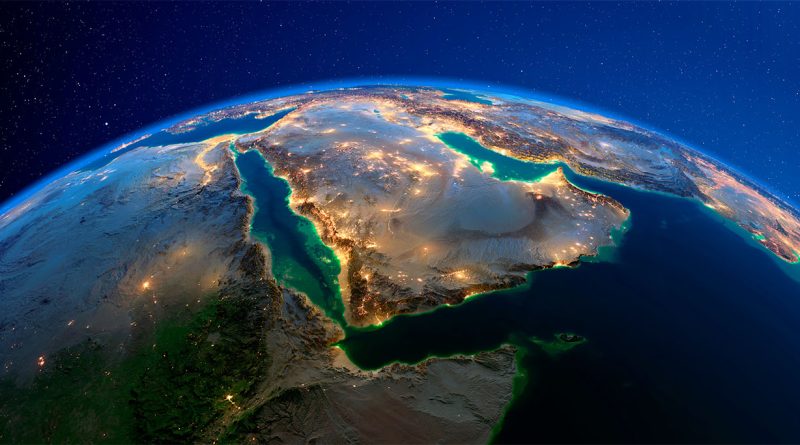US and Saudi Arabia Sign Mining and Minerals Pact During Trump Gulf Visit
Subscribe to our free newsletter to keep up to date with the latest mining and minerals news.
President Donald Trump’s 2025 Middle East tour marks a dramatic return to high-stakes diplomacy, launched with a visit to Riyadh that prioritized economic influence over conventional geopolitical alignments. Foregoing a stop in Israel, Trump aimed instead to solidify a redefined US-Saudi relationship. At the heart of this recalibration was the announcement that the US would lift longstanding sanctions on Syria, an unprecedented move, reportedly urged by Saudi Crown Prince Mohammed bin Salman.
The decision signals a major policy departure, potentially enabling Syria to attract reconstruction financing and diplomatic rehabilitation after over a decade of civil conflict. While critics within Washington have questioned the strategic tradeoffs involved, Saudi officials praised the lifting of sanctions as a pathway toward regional stability and economic normalization.
Trump’s alignment with Gulf monarchies reflects an overt shift from military intervention to commercial diplomacy. The administration appears focused on securing long-term US influence in the region through economic integration rather than direct military involvement or ideological coalition-building.
A $600 billion commitment signals Saudi confidence in US relations
The centerpiece of Trump’s visit was the announcement of a $600 billion investment commitment from Saudi Arabia, aimed at bolstering sectors including energy, infrastructure, and defense. White House officials described the package as the most significant US-Saudi economic engagement in modern history.
This agreement includes bilateral projects in both nations. Among the most prominent was a newly signed Memorandum of Cooperation between the Kingdom of Saudi Arabia’s Ministry of Industry and Mineral Resources and the US Department of Energy. The agreement targets joint collaboration in mining and mineral resources, with a focus on enhancing the diversification and resilience of critical mineral supply chains.
The Saudi commitment builds on existing infrastructure programs such as the King Salman International Airport expansion and the Qiddiya entertainment city project. US firms involved in engineering, logistics, and renewable energy are expected to benefit from new contracting opportunities as Riyadh deepens its investment in its long-term Vision 2030 strategy.
Historic $142 billion arms deal reshapes defense dynamics
Alongside the broader economic package, Trump announced the finalization of a $142 billion arms deal, which administration officials described as the largest defense cooperation in US history. The agreement spans next-generation missile systems, cybersecurity partnerships, and tactical aircraft purchases.
For the defense sector, this deal represents a multi-year pipeline of manufacturing and service contracts. US defense contractors, already benefiting from elevated Pentagon spending, are likely to experience increased demand across their foreign military sales divisions.
Strategically, the deal will have implications across the Gulf. While Saudi Arabia remains the anchor buyer, the broader regional context includes escalating tensions with Iran and intermittent instability in Yemen and Iraq. Critics warn the arms influx could heighten regional militarization. However, administration officials argue the deal is a stabilizing force that reinforces deterrence and ensures interoperability with US allies.
AI partnerships elevate Saudi Arabia’s ambitions and US tech influence
Technology diplomacy took center stage with the announcement of AI-focused partnerships between Saudi Arabia and leading US companies, including Nvidia and AMD. These agreements aim to position the kingdom as a global hub for artificial intelligence development, with investment earmarked for data centers, algorithmic research, and upskilling the Saudi workforce.
The US sees these deals not only as commercial wins but as strategic tools to counterbalance China’s expanding digital influence in the Middle East. By embedding American hardware and software into the Gulf’s AI infrastructure, the US can shape regional tech standards while securing markets for its most advanced semiconductor firms.
Saudi officials have indicated that AI will become a core part of their post-oil economy, and these partnerships reflect that ambition. With growing youth unemployment and a stated desire to shift away from hydrocarbons, AI and digital transformation are considered pillars of the kingdom’s future competitiveness.
Broader Middle East diplomacy and Trump’s return to foreign stage
Trump’s tour also included stops in Qatar and the UAE, extending the economic focus of the trip across key Gulf Cooperation Council states. In Abu Dhabi, discussions reportedly centered on infrastructure financing and shared ventures in logistics and aerospace. Qatar’s Emir welcomed Trump with a slate of agreements focused on LNG trade and cybersecurity cooperation.
Notably absent from the itinerary was Israel, a move interpreted by analysts as strategic rather than neglectful. While Trump encouraged Riyadh to normalize relations with Israel, he refrained from immediate diplomatic engagement. His team suggested that a broader regional framework, potentially involving new terms for Iran, would precede any formal agreements.
Sources:
